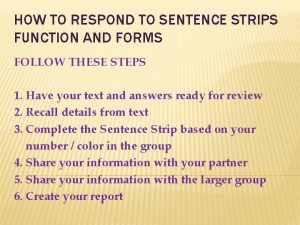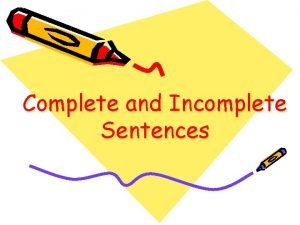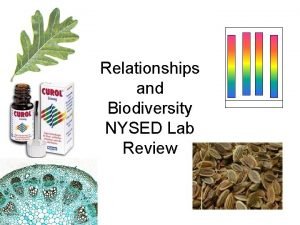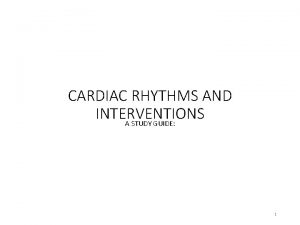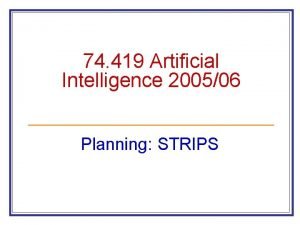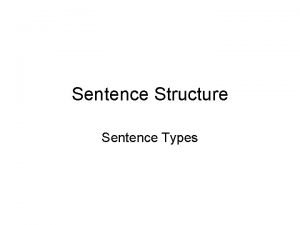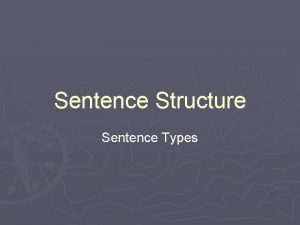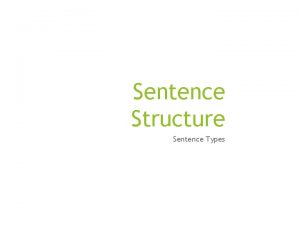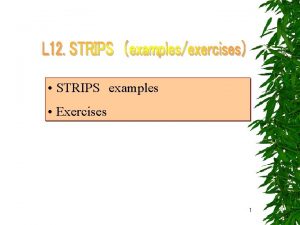HOW TO RESPOND TO SENTENCE STRIPS FUNCTION AND








- Slides: 8

HOW TO RESPOND TO SENTENCE STRIPS FUNCTION AND FORMS FOLLOW THESE STEPS 1. Have your text and answers ready for review 2. Recall details from text 3. Complete the Sentence Strip based on your number / color in the group 4. Share your information with your partner 5. Share your information with the larger group 6. Create your report

HOW TO RESPOND TO SENTENCE STRIPS FUNCTION AND FORMS � � � � Avoid dead words (thing, someone, got, different, stuff, a lot, many, very, something, good, bad) Use strong, precise active voice verbs When possible, combine sentences using coordinating conjunctions (FANBOYS—for, and, nor, but, or, yet, so) Use parallel structure to create balance and symmetry between and among ideas Create variety in your sentences by using infinitive, participial, and gerund phrases Avoid idioms, colloquialisms, and slang; instead, sound like a professor. Be sure to place ideas next to the word they are modifying. Proximity shows the reader which ideas are linked.

BLUE - # 1 / RED # 4 strip # 1 Sentence – Identify new ideas / make new plans Function and forms From this choice of words, “X’s” character develops as ________. “X” symbolizes ________. The author chose the word ________, which shapes our understanding of GREEN # 2 YELLOW # 3 Sentence strip # 2 Sentence strip # Literary Analysis 3 Analysing Function and forms Author’s Purpose / [Author] employs Compare & [technique] in order Contrast to establish _________ In this scene, _____. The word the author ______ describes suggests _________________, showing ___. The us how _____tone of _______ the story is created ___. through the use of In contrast to _______. the earlier I learned that segment, this _______ scene illustrates , so now I think how ______________. I still need to know _______ ORANGE Sentence strip # 4 Thematic Development & Point of View Function and forms From the beginning of the story, “X’s” character lacks the ability to ________ _. The narrator unfolds the crisis by saying, “______________ ___” (From “X’s” point-of-view, he/she claims that

BLUE - # 1 / SENTENCE STRIP # 1 – IDENTIFY NEW IDEAS / MAKE NEW PLANS FUNCTION AND FORMS From this choice of words, “X’s” character develops as ______________. � “X” symbolizes ____________. � The author chose the word ___________, which shapes our understanding of how _______. � The novel’s “X” point-of-view reveals ________________. � The author’s style of including ____________suggests that ________. � The image of __________ evokes a feeling of ___________. �

GREEN # 2 / SENTENCE STRIP # 2 LITERARY ANALYSIS FUNCTION AND FORMS � [Author] employs [technique] in order to establish ___________. The word ______ suggests __________. The _____tone of the story is created through the use of _______. � I learned that _______ , so now I think _______. I still need to know–find out _______.

YELLOW # 3 / SENTENCE STRIP # 3 ANALYSING AUTHOR’S PURPOSE / COMPARE & CONTRAST � � � In this scene, the author describes __________, showing us how _________. In contrast to the earlier segment, this scene illustrates how ________________. From this example, we see the development of _____________________. In other words, ________________. This passage portrays ___________ and develops our understanding of ______.

ORANGE / RED # 4 / SENTENCE STRIP # 4 THEMATIC DEVELOPMENT & POINT OF VIEW FUNCTION AND FORMS � From the beginning of the story, “X’s” character lacks the ability to ________. � The narrator unfolds the crisis by saying, “________________” (From “X’s” point-of-view, he/she claims that “_____________” As a result of their conflict, “X” concludes that “_____________” The plot’s action progresses when “X” proclaims “_____________”

HOW TO RESPOND TO SENTENCE STRIPS FUNCTION AND FORMS / EXIT SLIP 6. Create your report… A. Name one important thing you learned in class today. B. What did you think was accomplished by the small group activity we did? C. Write/ask one question about today’s content. D. One of the goals of this class is to have all participants contribute to the seminar. How well do you think this was achieved today?
